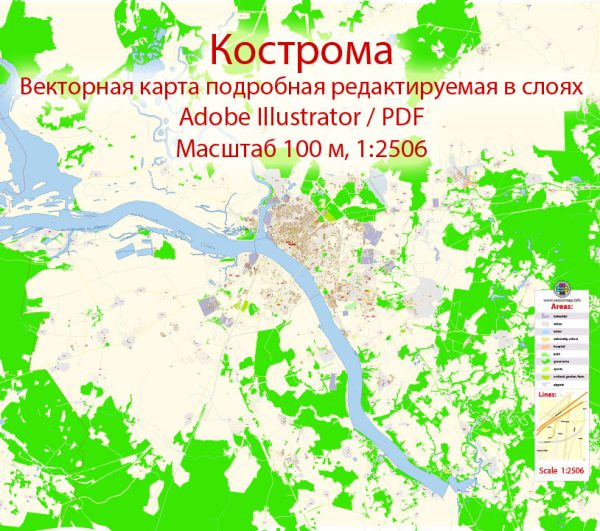Kostroma is a historic city in Russia with a rich history that dates back to the early years of the country. Here is an overview of the history of urban development in Kostroma:
- Foundation and Early Years (12th Century):
- Kostroma was founded in the 12th century, with the exact date believed to be around 1152.
- The city’s location on the Volga River contributed to its early development as a trading and craft center.
- Golden Ring City (14th-17th Centuries):
- Kostroma is part of the Golden Ring of Russia, a group of historically rich cities northeast of Moscow.
- During the 14th to 17th centuries, Kostroma played a significant role in trade, particularly as a center for textiles and handicrafts.
- Ivan the Terrible and the Oprichnina (16th Century):
- In the 16th century, under the rule of Ivan the Terrible, Kostroma became a part of the Oprichnina, a separate territory directly controlled by the Tsar.
- The city suffered during this time, with a significant impact on its population and development.
- Time of Troubles and the Romanov Dynasty (17th Century):
- Kostroma played a role in the events of the Time of Troubles (early 17th century), a period of political instability in Russia.
- The city is associated with the Romanov Dynasty, as it was in Kostroma that Mikhail Romanov, the first Romanov Tsar, was offered the Russian crown in 1613.
- Imperial Russia (18th-19th Centuries):
- Kostroma continued to be an important trade and cultural center during the Imperial period.
- Architectural development during this time included churches, merchant houses, and government buildings.
- Soviet Era (20th Century):
- Like many Russian cities, Kostroma experienced significant changes during the Soviet era, with industrialization and urban planning initiatives.
- Some historic structures were preserved, while others were repurposed or demolished.
- Post-Soviet Period (Late 20th Century-Present):
- After the collapse of the Soviet Union, Kostroma, like many Russian cities, faced economic challenges.
- Efforts have been made to preserve and restore historical sites, and the city has increasingly become a tourist destination.
- Architectural Highlights:
- Kostroma boasts several architectural gems, including the Ipatiev Monastery, the Resurrection Church on the Debra, and the Fire Tower, which is a part of the city’s historical ensemble.
Throughout its history, Kostroma has faced periods of both prosperity and hardship, shaping its unique cultural and architectural heritage. The city’s blend of historical significance and natural beauty makes it a fascinating destination for those interested in Russian history and culture.


 Author: Kirill Shrayber, Ph.D.
Author: Kirill Shrayber, Ph.D.